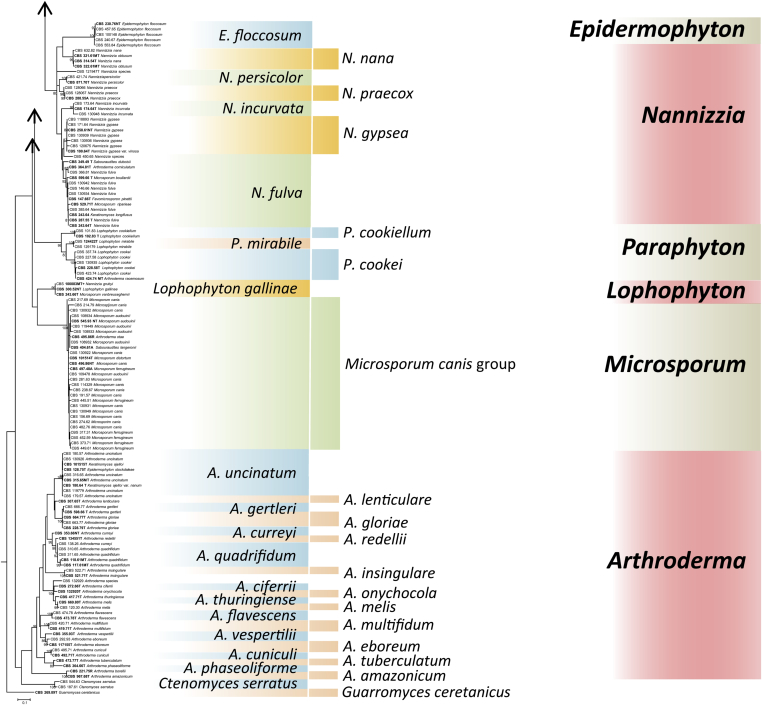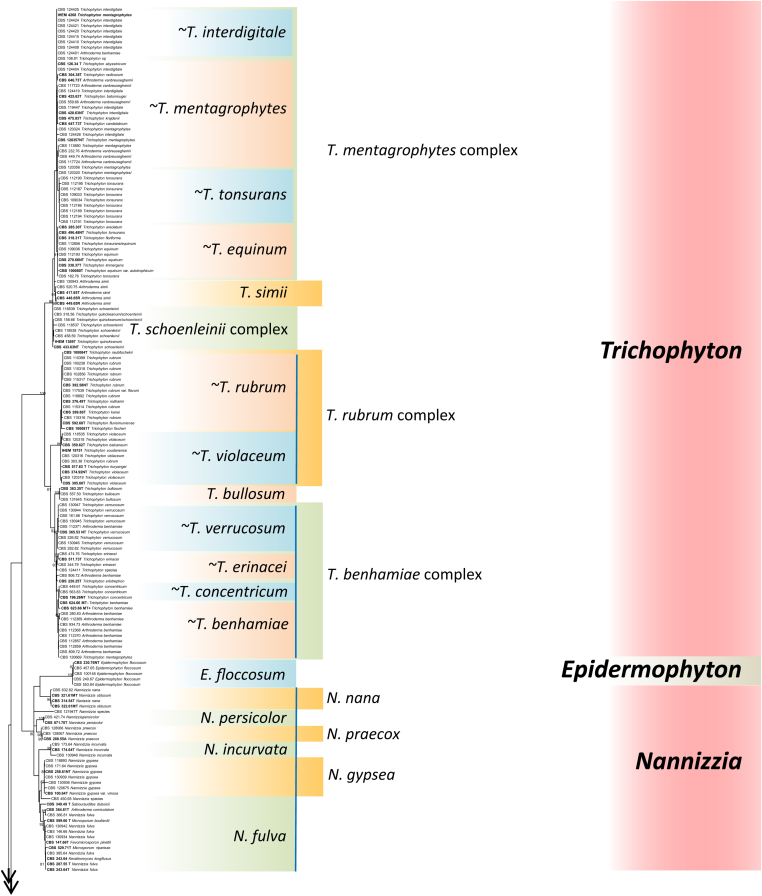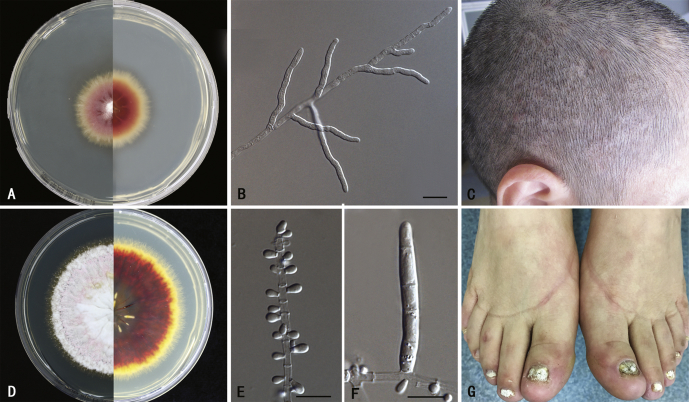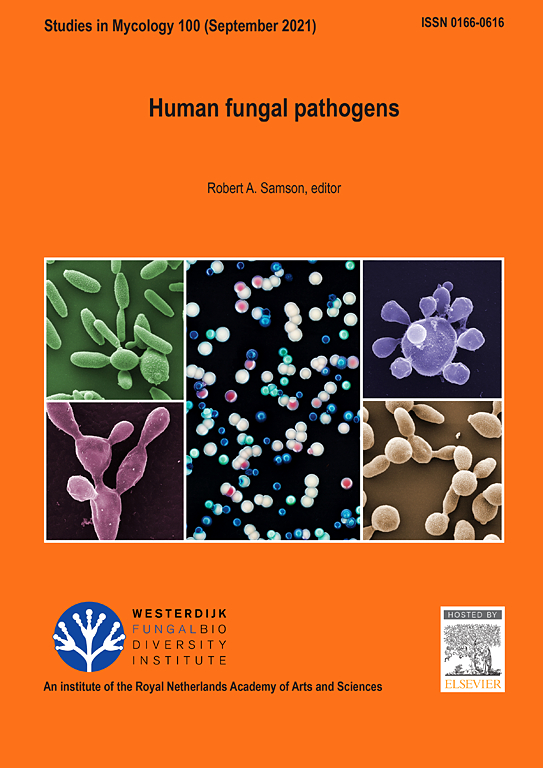Phylogeny of dermatophytes with genomic character evaluation of clinically distinct Trichophyton rubrum and T. violaceum
Abstract
Trichophyton rubrum and T. violaceum are prevalent agents of human dermatophyte infections, the former being found on glabrous skin and nail, while the latter is confined to the scalp. The two species are phenotypically different but are highly similar phylogenetically. The taxonomy of dermatophytes is currently being reconsidered on the basis of molecular phylogeny. Molecular species definitions do not always coincide with existing concepts which are guided by ecological and clinical principles. In this article, we aim to bring phylogenetic and ecological data together in an attempt to develop new species concepts for anthropophilic dermatophytes. Focus is on the T. rubrum complex with analysis of rDNA ITS supplemented with LSU, TUB2, TEF3 and ribosomal protein L10 gene sequences. In order to explore genomic differences between T. rubrum and T. violaceum, one representative for both species was whole genome sequenced. Draft sequences were compared with currently available dermatophyte genomes. Potential virulence factors of adhesins and secreted proteases were predicted and compared phylogenetically. General phylogeny showed clear gaps between geophilic species of Arthroderma, but multilocus distances between species were often very small in the derived anthropophilic and zoophilic genus Trichophyton. Significant genome conservation between T. rubrum and T. violaceum was observed, with a high similarity at the nucleic acid level of 99.38 % identity. Trichophyton violaceum contains more paralogs than T. rubrum. About 30 adhesion genes were predicted among dermatophytes. Seventeen adhesins were common between T. rubrum and T. violaceum, while four were specific for the former and eight for the latter. Phylogenetic analysis of secreted proteases reveals considerable expansion and conservation among the analyzed species. Multilocus phylogeny and genome comparison of T. rubrum and T. violaceum underlined their close affinity. The possibility that they represent a single species exhibiting different phenotypes due to different localizations on the human body is discussed.




 求助内容:
求助内容: 应助结果提醒方式:
应助结果提醒方式:


